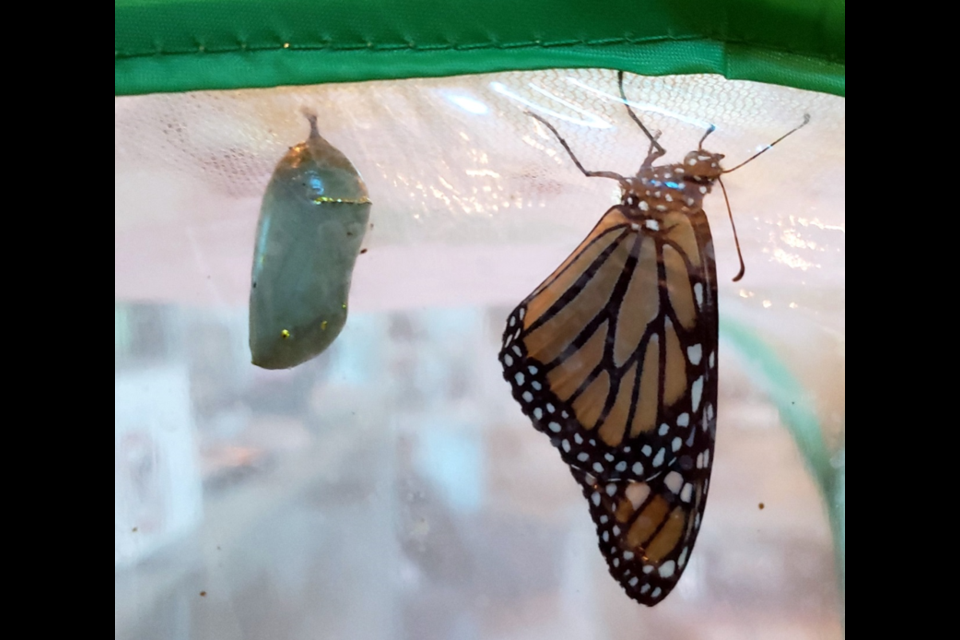MANITOUWADGE -- The Monarch caterpillars were very late this year, and John Lavoie, local wildlife enthusiast, was concerned that they wouldn’t make an appearance at all. A couple of weeks ago, however, he found seven pupae on the milkweed he’d planted in his yard. He transferred the little creatures to a mesh butterfly cage and placed them at the museum where he, the volunteers and local visitors alike, all watched their progress.
When the pupa, which was originally bright green, turned a more mature dark brown, Lavoie knew that the metamorphosis would be completed soon. When he came in on Saturday morning, he’d found that two beautiful Monarchs had emerged from their chrysalis and were exercising their wings in preparation for their next stage: freedom! Lavoie immediately put the word out, and quickly orchestrated a short public lecture and butterfly release for Sunday afternoon.
Folks of all ages took advantage of the bright, sunny day and showed up for the event which took place on the museum lawn. Lavoie gave a short talk about the lifecycle of the Monarchs, which, he explained, begins in the conifer tree forests of Oyamel, Mexico, where the butterflies roost for the winter. In the early spring, the insects make their way north, laying eggs on milkweed leaves. Bright yellow and black caterpillars hatch from these eggs, and eventually morph into butterflies, which in turn will lay its own eggs. This egg-to-adult cycle repeats for several short generations along the route. The butterflies that show up each spring in northern Ontario are actually the grandchildren of the butterflies that migrated south to Mexico the previous fall.
Lavoie explained that Monarchs would only lay their eggs on milkweed, as this was the only plant that the newly hatched caterpillars will eat, and he provided seeds and seedlings for audience members to take home to plant in their own gardens.
Then came the big event. One by one the butterflies, two females, along with a male which had emerged on Sunday morning, were carefully removed and set free into the summer breeze. The two females immediately flitted their way up and away into the distance, but the male, which could be identified by two black spots on his wings, flew up to the roof of the museum, presumably to get his bearings.
These three new butterflies will become another cog in the Monarch lifecycle. The females will lay their fertilized eggs and the next phase of caterpillars will hatch in August. It is this last generation that will make the 4,000-kilometer journey back to Mexico to hibernate, then start the migration cycle all over again.
If Lavoie is fortunate enough to find the eggs, caterpillars or pupa and house them until they are ready to leave on their journey south, he will tag them with small, lightweight stickers provided by Monarch Watch, an organization dedicated to the conservation of the butterflies. Each sticker bears a distinct number through which Lavoie can be identified and contacted, and important information about the Monarch’s migration can be collected.
There is a lot of mysterious beauty out there in our world, and the Monarch butterflies are certainly an enchanting element of nature. We can do our part in preserving this wonder by planting milkweed and avoiding the use of pesticides. If you want more information about the Monarch butterflies in Manitouwadge, you can visit the museum, which is open from 11 a.m. to 8 p.m., seven days a week until September, or contact John Lavoie at (807) 826-3549 or [email protected].
